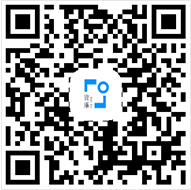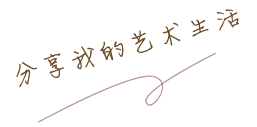唐华伟的绘画艺术:精神的肖像
丹青
绘画在当下,早已不是时髦的表达方式。用绘画艺术作为视觉媒介的艺术家甚至显得传统与保守,可是当“装置”、“影像”、“行为”等新的表现形式也进入学院课堂不再前卫,并且成为传统的一部分的时候,绘画艺术又与这些“新传统”一道,回归到同一起跑线上,面临着只有注入这个时代的新鲜血液才有可能获取当代意义的难题。与这些“新传统”相比,绘画艺术要想创造一种新的言说方式进入到当代语境中的难度更大,因为它曾经在悠长的历史长河中一直扮演着视觉艺术最重要的角色,“传统”这张大网牢牢地束缚着它,甚至有西方理论家认为绘画艺术已无创新的空间。
然而,总有勇敢者另辟蹊径,在艺术理论家陷入思维的死胡同时勇于将创造的触角伸向未知领域,用他们的智慧与勇气拓展当代艺术的边际。虽然这些勇者看起来有些偏执与疯狂,但是艺术史的每一次递嬗甚至人类文明的进步何尝不受益于这些敏感而又坚韧的极少数者呢?
踏入唐华伟的画室,环顾四壁,视觉神经犹如受到电击一般,立马振作起来。一种前所未有的视觉形象映入眼帘,让人感到既熟悉又陌生——熟悉的是油彩画布做媒介,陌生的是从未谋面的超乎过往视觉经验的绘画语言。哦,在审美疲劳的当下,原来绘画还可以有这样的表现——真给我们拿画笔的艺术家长脸,不仅让人拍案叫绝,更有相见恨晚、惊鸿一瞥的喟叹。
显然,这个心无旁骛,长期埋头摆弄画布的隐者也属于这个时代的“极少数者”。
他的作品尺幅巨大,极具个性化的绘画语言游走在抽象与具象之间,直接、猛烈、激情四溢、直捣人心,画面焕发出勃勃生机,生发出巨大的精神能量。画面涌动的气息犹如山呼海啸,又犹如生命的痉挛与震颤,令观者不由得血脉偾张,情不自禁地进入到画面营造的氛围里,随着他的画刀轨迹一呼一吸。画面中,那些充满力量相互缠绕扭动的线,那些饱和浓烈的色彩,还有沉郁的油彩质地,里面包含了呐喊、昂扬、不屈、抗争、喘息,还有幽微与沉静,无不是生命情态的写照,更是精神的肖像。
在这里,生命的温度与精神的质感在画布上发挥得淋漓尽致。
他画画的过程,亦尤为可观,称得上是另一种意义上的行为艺术——粗大的画刀在他手里上下翻飞,疯狂舞动,整个身体都投入其中,物我两忘,将身体能量全部释放在画布上。犹如武士仗剑,嘶吼着冲入乱军阵营,奋力搏杀,直至力竭。他的创作,有的似是与画布进行战斗,有的又似是与画布的一场欢爱。画布承载的是战斗的残骸或者欢爱的痕迹。因此,他的绘画语言与他的绘画行动如出一辙,又与他的生命状态完全吻合,浑然一体。
面对纯粹的视觉语言所产生的力量,任何文字的阐释在它面前都显得多余与贫弱。
看得出来,唐华伟的绘画语言历经长期的积淀与锤炼,而后才有升华与超越。从他的画作里,我们看到一个中国当代艺术家用他自己的生命体验解构原本属于西方文明的油画语言,进而重新建构完全独立与独特的绘画语言。从这个角度来说,这是中国艺术家在全球当代艺术的语境下,开先河,将绘画提升到一个新的境界,为绘画艺术在当代艺术的发展与实践的道路上树立起一个新的路标。
Portrait of Spirit—Tang Huawei’s Painting Art
Nowadays, painting is no longer a fashionable way of expression for long. Artists making use of painting as visual media seem even traditional and reserved. But when the new expressions as “installation,” “video” and “behavior” became less avant guard and a part of tradition, painting, together with those “new traditions,” retreated to the starting line, facing the conundrum of transfusing blood of the era for contemporary meaning. In comparison with the “new traditions,” painting is facing greater difficulty in creating a new way of expression to gain access to contemporary context, since it has been playing the most important role in visual art in history. “Tradition” is entangling it as an overspreading net, making some western theorists believe that there is no room for painting to innovate.
However, the courageous always risks to finding a new course, directing their creative antenna into unknown field when art theorist’s thinking ran into dead end, in order to expand the boundary of contemporary art with their wisdom and courage. Although appeared crazy and stubborn, is there any single change, even progress of human civilization in art history which was not promoted by the few sensitive and tough courageous?
Looking around in Tang Huawei’s studio, the optic nerve would be stimulated as if being electrically shocked. Unprecedented visual images filed into your eyes, making you feel familiar and strange. Feeling familiar is because oil painting canvas is still the media, and feeling strange is because the never seen painting language has gone beyond all of your previous visual experience. Ah, in an era filled with aesthetic fatigue, painting can be expressing in this way. It really honored we painting brush holders, for it not only awed us, but also made us regret for the late encounter and very short glimpse.
Obviously, the hermit, dedicating to canvas without distraction, belongs to the “few” in the era.
His works are usually huge in size, with extremely individualized painting language travelling through abstract and figurative images, direct, fierce, passionate and awakening. The vigor glowing in the paintings produces enormous spiritual energy. The passion surges as tsunami, and trembles in life, energizing the audience and bringing them into the atmosphere he created, to smile or wail with his painting knife. In his paintings, the powerful, winding and intertwining lines, the strong and saturating colors, and the dull but glimmering nature of oil paint delivers unyieldingness, struggle, outcry and high spirit, together with solemn and serenity. All are the vivid description of emotions and portrait of spirit.
Here the temperature of life and the nature of spirit are fully exploited on the canvas.
The process of painting is especially awesome, which can be named as another behavioral art in a sense. The big painting knife flied and danced up and down in his hand, together with his body. All of his energies were invested into the canvas, ignoring everything, the self and the other. He was a warrior with sword in hand, struggling with enemies until the last minute. His creation, sometimes looks like a struggle against canvas, sometimes looks like a love affair with it. The canvas delivers the trails of struggle or love. Therefore, his painting language perfectly matches his painting action, as well as his living state. The three elements are thoroughly integrated with each other.
In the face of the strength created by the pure visual language, any written interpretation seems redundant, poor and weak.
It can be clearly seen that Tang Huawei’s painting language sublimed and transcended itself after long-term accumulation and polish. In his paintings, we can see the contemporary Chinese artist was destructing the oil painting language from western civilization with his own life experience, and then restructuring his completely independent and unique painting language. In this sense, this Chinese artist has taken the lead in uplifting painting into a new realm in the context of global contemporary art, and set up a new landmark in the development and practice of contemporary art.
Dan Qing
Nov. 2014


扫描下载宝库APP
扫描关注新浪收藏官方微信







